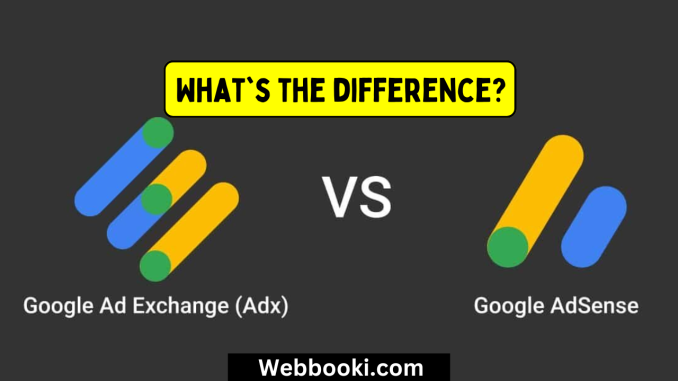
Google AdX, previously called Ad Exchange, and Google AdSense are leading platforms in the digital advertising ecosystem of different publisher requirements and needs for the advertisers. Both work for content monetizing and reaching audiences; however, with different models, their purposes will also be different. Understanding the differences will help publishers and advertisers choose the right tool for their goals.
What is Google AdSense?
Google AdSense is a program of advertising in which the owner gains money by showing ads on their website. It is specifically designed for the smaller publishers and individual content creators. Here’s how one should go about it:
Ad Placement: The publishers sign up, get a code, and place it on their websites. It is this code that generates only relevant advertisements to the content of a site and the type of its visitors.
Revenue Model: AdSense is a pay-per-click (PPC)/cost-per-impression model. Publishers shall earn money each time the visitors click on such ads or simply when the ads come into view, whichever way has been agreed upon.
User-Friendly: AdSense happens to be very easy to operate. Many people in some instances view this network as one of the most accessible ad networks for beginners. All a publisher needs to do is include a small code on their website, without deep technical knowledge being involved.
Variety in ad formats: It has different forms of advertisement formats, including text ads, display, and even video, which the publisher can later choose depending on what best fits their content.
What is Google AdX?
Google AdX, or Google Ad Exchange, is a more advanced platform. As a marketplace, it allows the buying and selling of ad inventory in real time. It is meant for bigger publishers and larger advertisers that need more granular control and flexibility with their advertising strategies. Here’s what sets AdX apart:
Real-time Bidding: AdX follows a real-time bidding model, wherein at any given time, multiple advertisers are allowed to bid for the ad space. This can lead to increasing revenue for the publisher due to the competitive environment and the fact that he is allowed to receive bids from a number of sources.
Better Control: Through AdX, publishers have a better sense of what kind of inventory goes live on their site and how that can be optimized to suit their audience and preferences. They are able to set floor prices for their inventory and choose specific advertisers for the same.
Integration with Other Platforms: AdX can be integrated with DSP, or Google’s Demand Side Platform-to make sure that the advertisers reach out to the targeted audiences. The synergy enables better ad targeting and optimization.
Complex: AdX is a lot more complicated compared to AdSense and requires a better understanding of programmatic advertising. Performance-wise, it usually fits larger websites that have significant volumes of traffic and an audience which is somewhat more sophisticated.
Differences between
They will work for smaller publishers and individual bloggers, while AdX will allow more advanced feature and control for larger publishers and advertisers.
Earned Revenue: AdSense offers a PPC and CPM model, while AdX is built upon real-time bidding, which could promise better revenue for the publisher.
Ease of Use: AdSense is idiot-proof and can be applied even by users who have never tried their hand at online marketing before. AdX requires more discomfort and insists one should know at least something about programmatic advertising.
Ad Control: AdX provides publishers with more power, giving them greater control over ad placements and bid strategies to optimize revenue better than in AdSense.
Conclusion
In the end, whether to choose between Google AdX or Google AdSense is totally dependent on one’s audience size, goals for advertising, and the experience one may have in digital marketing. Small publishers will find AdSense an ideal beginning point for monetization, while large publishers and advertisers will find AdX more appealing. Understanding these differences is key to successfully navigating the digital advertising landscape and maximizing revenue potential.
Leave a Reply